Chinese naval aviation helicopters
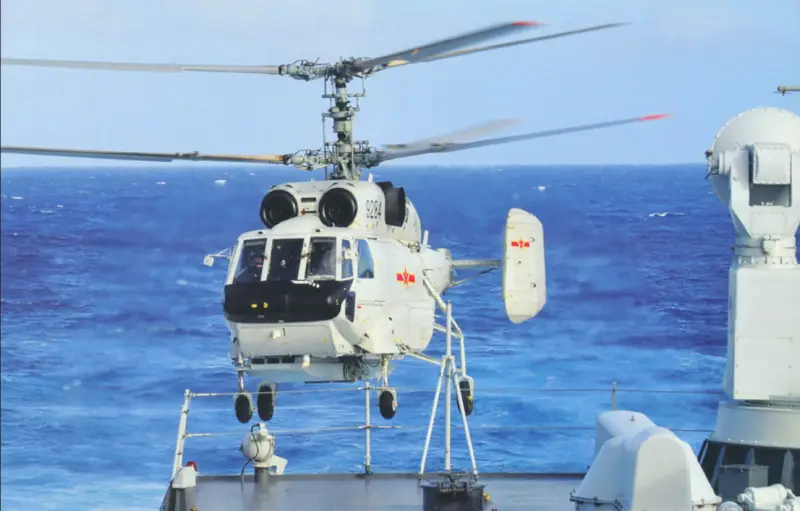
The PRC's naval forces are currently developing at a very high pace, and the combat potential of the Chinese naval aviation, including deck.
Today we will talk about helicopters that are used by the Chinese fleet for landing, fire support and anti-armored vehicles, cargo delivery, sea mine sweeping, anti-submarine warfare and long-range radar detection.
In the 1970-1990s and in the first decade of the XNUMXst century, China actively purchased helicopters abroad, and at the same time acquired licenses for the production of foreign machines. But at present, the Chinese aviation industry almost completely satisfies the needs of the PLA Navy for helicopters and supplies rotary-wing aircraft for export.
Russian-made helicopters in the PLA Navy
An agreement to supply the first batch of 24 Mi-8 helicopters was signed in 1989, shortly after the normalization of relations between Moscow and Beijing. In the 1990s, China received another 60 Mi-8 helicopters. In the 250st century, about 17 Mi-XNUMX multi-purpose helicopters were sent to China from Russia.
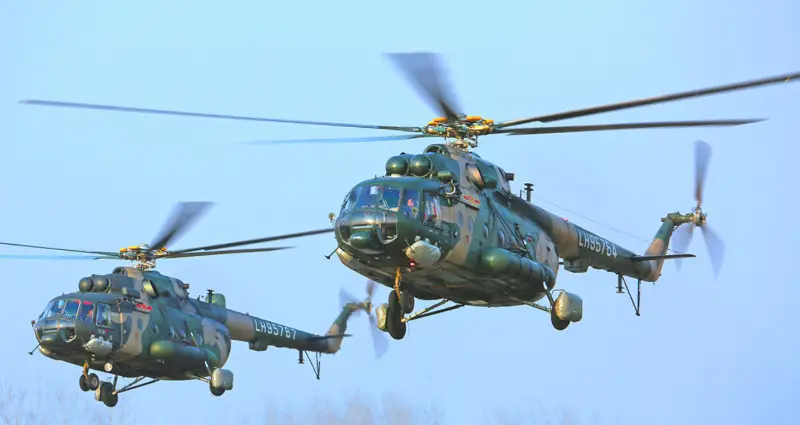
In the Chinese armed forces, Mi-8/17 helicopters are mainly used by the army aviation and air force, but six such machines are used by the Chinese navy. These helicopters are not suitable for deployment on ships and mainly operate in the interests of coastal units to deliver cargo and passengers. Experts note that the Mi-8/17 is much simpler and cheaper to operate than the Ka-27, Ka-28, Z-8 and Z-18 helicopters available in the Chinese navy.
In 2000, the PLA Navy received six anti-submarine Ka-28 (export version of the Ka-27PL) and three search and rescue Ka-27PS. In October 2009, it was reported that eight more Ka-28 anti-submarine helicopters had been ordered. It was assumed that the Ka-28 would be deployed on Type 52 and Type 55 destroyers, and the Ka-27PS would be part of aviation groups deployed on Chinese aircraft carriers.

The anti-submarine Ka-28 is equipped with a water surface scanning radar, sonar buoys and a submersible sonar. The internal bomb bay can accommodate 6 PLAB-250-120 depth charges or an APR-3E guided torpedo.
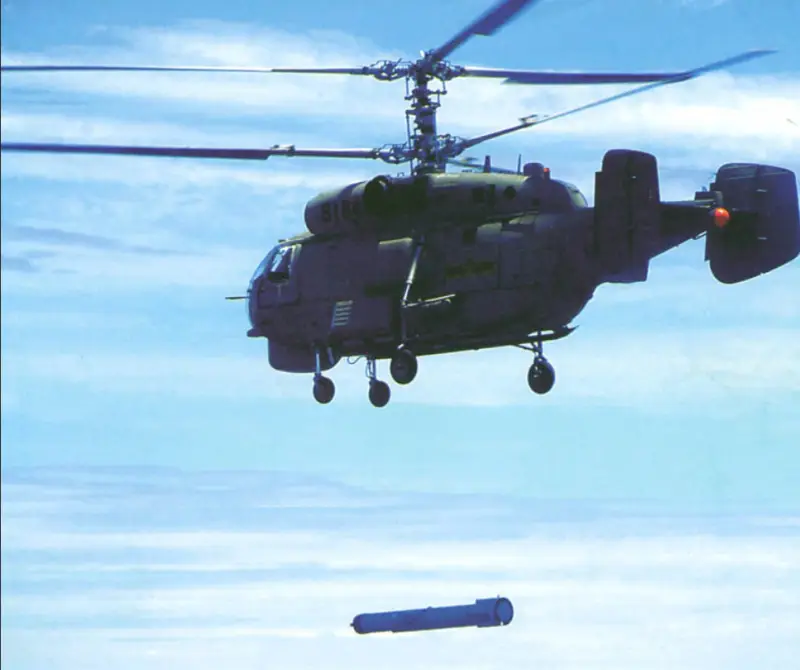
The onboard equipment of the Ka-27PS and Ka-28 helicopters in China has undergone modifications. In June 2016, a spherical platform of a 27-hour search optoelectronic system was installed under the fuselage of the Ka-XNUMXPS search and rescue helicopter.
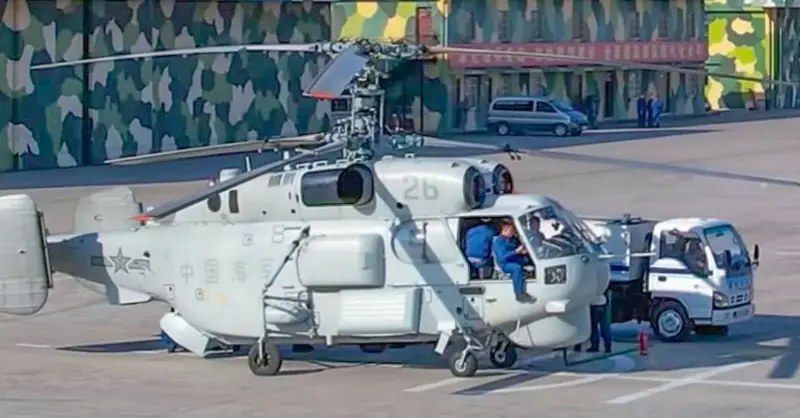
In August 2023, a photograph of the Ka-28 with new electronic warfare system antennas was published.
The first deck-based long-range radar detection aircraft in the Chinese fleet was the Russian Ka-31. The contract for the construction of nine helicopters was concluded several years before the start of testing of the Liaoning aircraft carrier. The first Ka-31 was delivered to the customer in November 2010, the contract was completed in 2016.
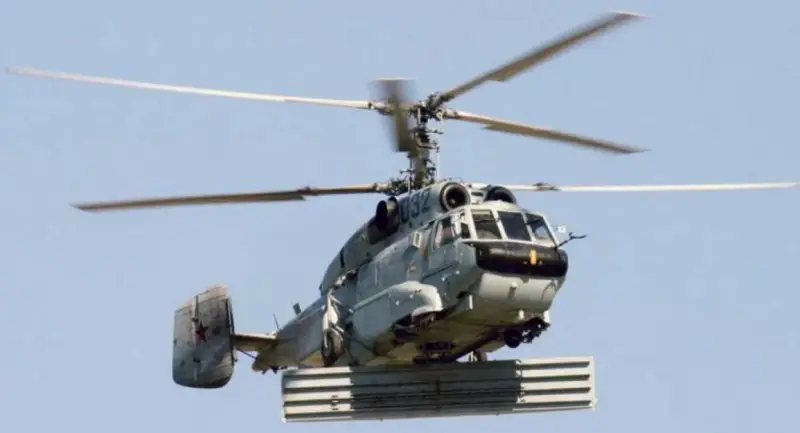
The Ka-31 AWACS helicopter is equipped with a UHF radar with a rotating antenna 5,75 m long, located under the fuselage. In the non-operating position and during landing, the antenna is folded. To ensure that the chassis does not interfere with the rotation of the antenna, it was modified: the front supports are retracted into the fairings, and the rear, main supports, received a mechanism that pulls them up. To increase the duration of its stay in the air, the helicopter received larger-capacity fuel tanks and a powerful TA-8K auxiliary power unit, launched when the radar was operating.
The maximum take-off weight reaches 12 kg. Flight speed with the antenna folded is up to 500 km/h. The maximum flight range is 255 km with a duration of 680 hours. Patrolling is possible at altitudes up to 2,5 km. Crew – 3500 people.
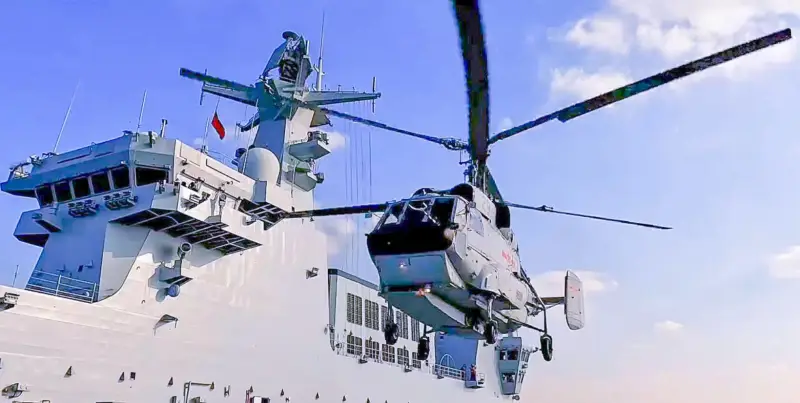
The E-801 "Oko" radio-technical complex, developed by NPO "Vega" for the Ka-31 helicopter, could detect air targets at a distance of 100-150 km and surface targets of the "missile boat" type at a distance of 250 km, while simultaneously tracking 20 targets. Ka-31 helicopters delivered to China received the new RTK BKS-252, but its characteristics are not disclosed.
Heavy multi-purpose helicopters Z-8 and Z-18
From 1964 to 1980, the Harbin aircraft plant produced the Z-5 (Zhishengji-5) helicopter, which was a Chinese copy of the Soviet Mi-4 helicopter with a piston engine. For a long period of time, the Z-5 was the only type of helicopter operated by the Chinese navy, and its service ended approximately 20 years ago.
By the standards of the 1950-1960s, the Mi-4 was an excellent machine, but by the beginning of the 1970s the helicopter lagged behind the world's advanced level of helicopter manufacturing. In the PRC, the situation was further aggravated by the fact that the quality of manufacturing of Chinese copies and the service life of the main units were lower than in the USSR.
An attempt to create a Z-5 helicopter with a gas turbine engine on the basis of the piston Z-6 was unsuccessful. As a result, a solution was found in the acquisition of modern helicopters in Western countries, which became possible after the rapprochement between China and the United States.
The trial balloon was the purchase of French SA.321 Super Frelon helicopters in anti-submarine and search and rescue versions. Since 1977, the Chinese fleet has received 14 Super Frelon helicopters (4 anti-submarine SA.321G and 10 transport SA.321H).
In terms of its capabilities, the SA helicopter was modern at that time. The 321 Super Frelon with three turboshaft engines was very significantly superior to the Z-5, equipped with a 1700 hp piston engine. s., and in the late 1970s the Chinese government acquired a license to produce a French rotorcraft. The installation batch was assembled from parts, components and avionics supplied by Sud-Aviation.
However, mastering the production of a very complex helicopter by the standards of the Chinese aviation industry took longer than planned in Beijing. The flight of the first specimen assembled in China took place in December 1985. Serial deliveries to the customer began in 1989. The helicopters were assembled at the CAIC aircraft manufacturing corporation in Jingdezhen (Jiangxi Province). Restoration work was also carried out here.
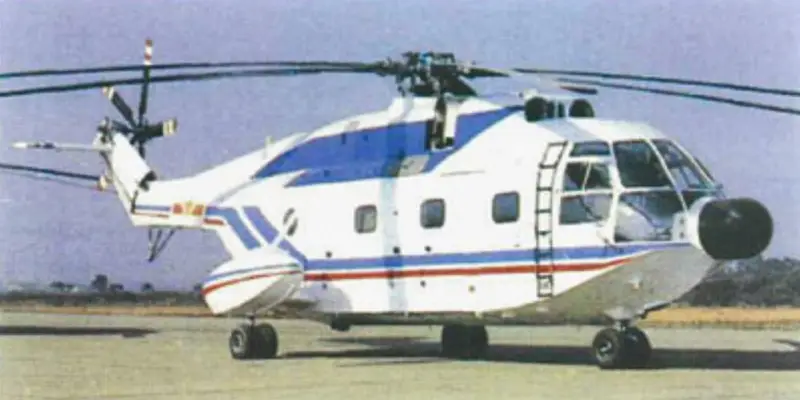
One of the Z-8 helicopters of the first batch
The Chinese version of the SA 321 Super Frelon was designated Z-8. The Z-8 was produced at a slow pace (5-7 copies were assembled per year). In total, about 150 helicopters of this type were built. Currently, according to reference data, the PLA Navy operates 31 Z-8 helicopters. The latest modifications of the Z-8F/K/KA were equipped with Pratt & Whitney Canada PT6A-67B engines.
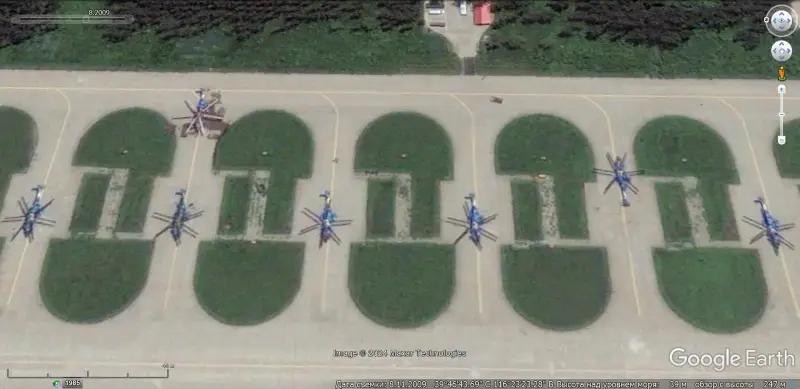
Google Earth satellite image: Z-8 helicopters at Beijing-Nanyua airbase, image taken in 2009
Four modifications were initially produced for the PLA Navy: transport and passenger, anti-submarine, search and rescue and ambulance. The PRC operated both amphibious variants and those that were not capable of landing on water.
The Chinese Z-8 can carry up to 39 people or up to 27 fully equipped paratroopers. The sanitary version has the ability to accommodate 15 stretchers of the wounded and medical equipment. The anti-submarine Z-8 is capable of carrying sonobuoys, torpedoes, anti-ship missiles and sea mines.
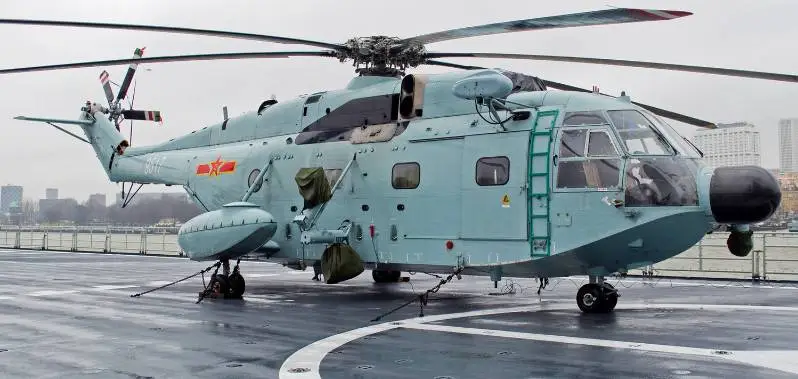
Maximum payload weight – 5000 kg. Crew: 2-5 people depending on modification. The maximum take-off weight reaches 13 kg. The power plant is three WZ-000 turboshaft engines (a copy of the Turboméca Turmo IIIC) with a power of 6 hp each. With. Maximum flight speed is 1156 km/h, cruising speed is 250 km/h, flight range is 230 km.
The Z-8 helicopter, which is a Chinese version of a French rotary-wing aircraft created in the early 1970s, no longer fully met modern requirements in the 18st century, and an improved Z-18 was designed on its basis in China. When developing the Z-313 helicopter, technical solutions implemented in the Avicopter ACXNUMX model were used. The design makes extensive use of titanium, composite materials and new Western avionics.
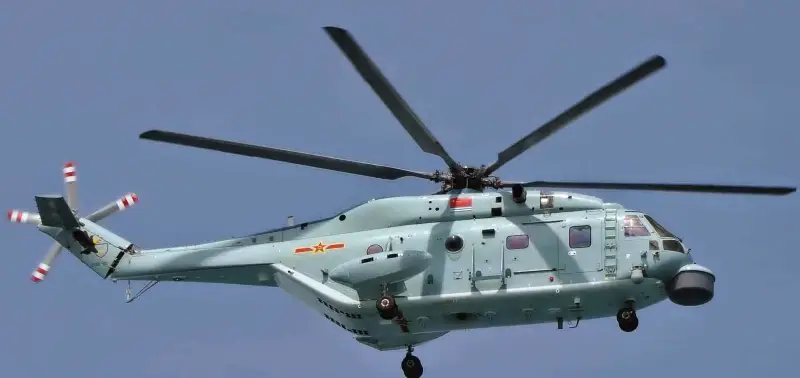
Anti-submarine helicopter Z-18F
The maximum take-off weight of the Z-18 helicopter is 13 kg. Maximum speed – 800 km/h. Flight range is about 336 km. Crew – 1000 people. The Z-4F helicopter can carry 18 sonobuoys, four Yu-32 anti-submarine torpedoes or four S-7 anti-ship missiles with a launch range of about 701 km. In the transport-passenger version, up to 30 armed military personnel or 30 kg of cargo on an external sling can be placed inside.
In 2009, information appeared about tests of the Chinese Z-18J long-range radar patrol helicopter with a radar antenna located in the area of the folding tail frame and lowered into the working position when the vehicle is in the air. As of 2022, 9 helicopters of this type could be in service.
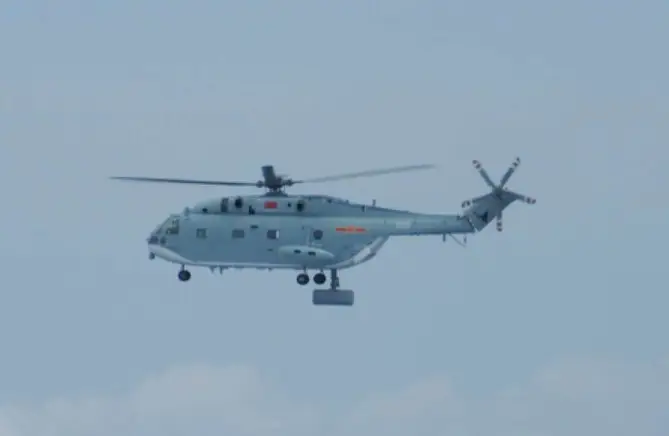
Chinese sources write that initially the Z-18J helicopters were supposed to be based on aircraft carriers. However, in connection with the successful development in China of a carrier-based AWACS aircraft, which is a functional analogue of the E-2 Hawkeye, the main purpose of the Z-18J is to provide timely warning of enemy air to ship groups that include missile destroyers and helicopter carriers.
At a distance of up to 100 km from the carrier ship, the patrol duration at an altitude of 3 m is 000 hours. The radio-technical complex is capable of recording targets at high and medium altitudes at a range of up to 2,5 km. Targets flying at low altitude are detected from a distance of 270 km. Crew – 90 people.
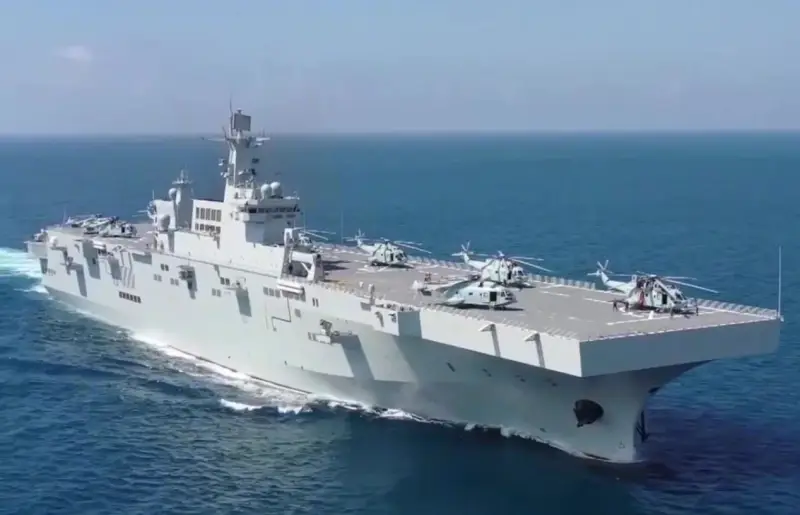
PLA Navy helicopter carrier Type 075
In addition to coastal airfields, the Z-8 and Z-18 helicopters are based on the Liaoning and Shandong aircraft carriers (6 units each), on the Type 071 transport and landing ships (4 helicopters), on the Type 075 amphibious assault helicopter carriers (possibility of accommodating more than 20 helicopters).
Multipurpose helicopter Z-9
In July 1980, the Chinese aircraft manufacturing corporation Harbin Aircraft Manufacturing Corporation (NAMC) received from the French company Aerospatiale a package of documentation and components for the assembly of 50 AS 365N Dauphin II multi-purpose helicopters. In China, this car was designated Z-9. The first helicopters of this type were assembled in 1981. Improved Z-9A helicopter, which was a copy of the AS 365 N2, with Arriel 1C2 engines producing 736 hp. with., a new tail section and extensive use of composites, has been produced since 1991.
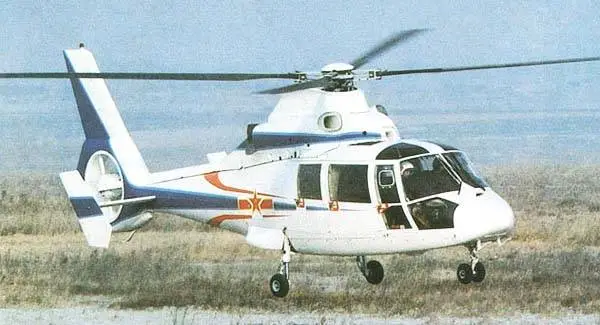
Z-9 helicopter of the first batch, assembled from French parts
At the first stage, Z-9 helicopters were mainly used to transport high-ranking officials, deliver urgent compact cargo and as ambulances. After understanding the operating experience gained and the military formulating the requirements for a new generation helicopter, in 1994 the troops began to receive modernized Z-9B helicopters, a significant part of the components for which were manufactured in China. The serial production of the Z-9B helicopter made it possible to begin the complete replacement of the hopelessly outdated Z-5.
The maximum take-off weight of the Z-9B is 3900 kg. Flight range – 910 km. The helicopter has a very streamlined shape, which in combination with two WZ-8 engines (a copy of Turbomeca Arriel 2) with a power of 830 hp each. With. provides flight speeds of up to 306 km/h.
The adoption of the Z-9B helicopter was a significant step forward for the PLA. It could perform the tasks of transporting 8-10 armed soldiers, rescue, communications, and command and control. An armed variant has also appeared, capable of providing fire support to ground units.
The exact characteristics of the most modern modifications of the Z-9 used by the PLA are not reliably known. Since 2003, deliveries of helicopters with Chinese-made engines with a take-off power of 980 hp began. With.
Currently, the licensing agreement concluded with Aerospatiale regarding the serial construction of multifunctional helicopters based on the French Dolphin has long expired. Nevertheless, the Chinese corporation NAMS continues to produce helicopters of the Z-9 family, which became the subject of a dispute between France and China.
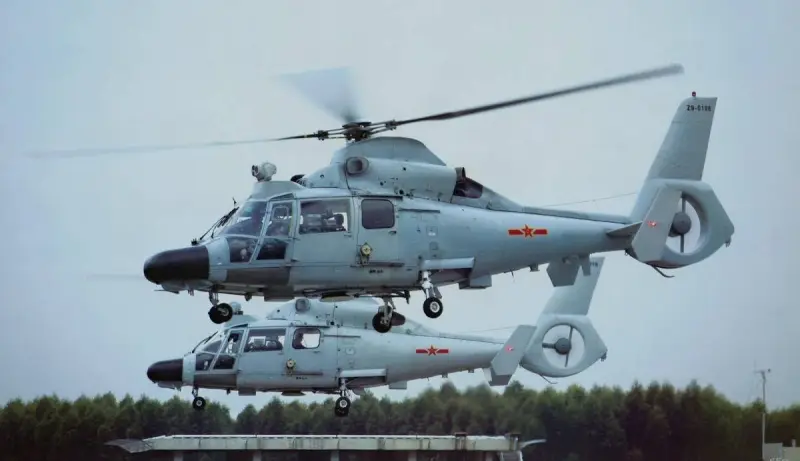
Z-9C helicopters
The PLA Navy version is known as the Z-9C. Naval helicopters are equipped with the KLC-1 millimeter wave surface search radar, which is used to detect surface targets beyond the range of shipborne radar systems when performing search and rescue and anti-submarine missions.
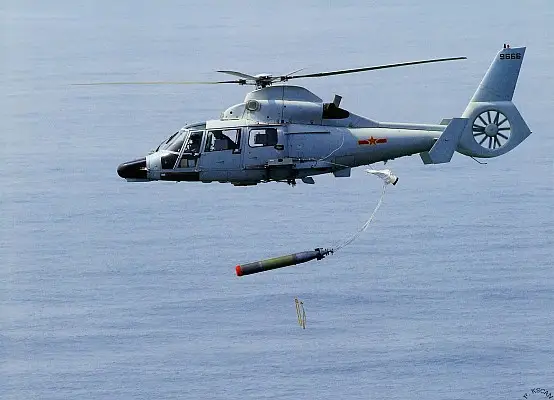
For anti-submarine warfare, the Z-9C can carry sonobuoys and small anti-submarine torpedoes. Helicopters of this type are based on Type 052D destroyers, Type 053, Type 053H, Type 054, Type 054A frigates and Type 056 corvettes. Light anti-ship missiles TL-10 and YJ-7 with a firing range of 15-30 km are used against surface targets.
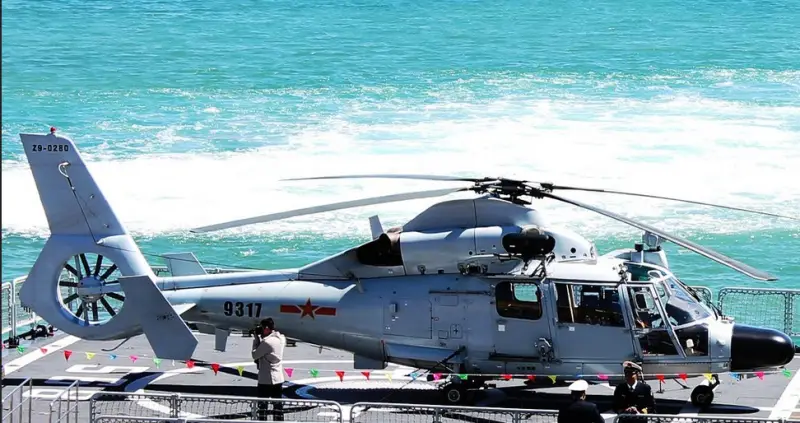
In 2011, the Z-9WA modification, designed for operations in the dark, was officially introduced. The helicopter is equipped with a night vision system and a new laser rangefinder/target designator. The crew now has multifunctional flat displays and a system for displaying information on the windshield. The Z-9WA's armament included laser-guided HJ-9 ATGMs.
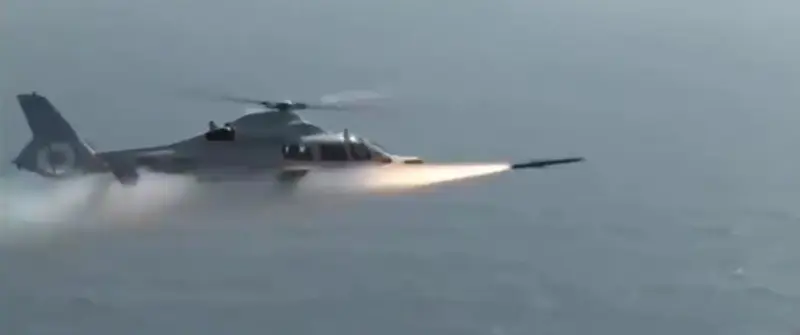
Deck-based helicopters, armed with pods with 57-90 mm NAR, containers with 12,7 mm machine guns and 23 mm cannons, as well as air-to-surface guided missiles, can be used for fire support for landing forces and the destruction of surface and ground targets.
However, it is impossible to assume that deck-based Z-9s are full-fledged attack helicopters. The sinicized Dolphin has low resistance to combat damage. Rather, it is a multi-purpose vehicle that has some capabilities in terms of destroying ground and sea targets not covered by strong air defense.
Research on adapting shock Z-10 and Z-19 for deck-based use
After the commissioning of the Type 071 transport and landing ships and Type 075 helicopter carriers, the Chinese fleet is in need of a combat helicopter capable of fully providing fire support to the Marine Corps and fighting armored vehicles on the line of contact.
In 2011, the Z-10 combat helicopter entered service with the PLA Army Aviation. Its creation was carried out in strict secrecy and came as a surprise to Western experts.
The appearance of this helicopter was largely possible thanks to a secret agreement concluded in 1995 with the Russian side, according to which the Kamov Design Bureau and the Chinese corporation Changhe Aircraft Industries Corporation created a joint design team that worked on a catalog of drawings for 2,5 years. According to a representative of the Russian company, the engineering and calculation group of the Kamov Design Bureau carried out design work in accordance with the parameters and layout diagram proposed by the Chinese side.
In addition, the Chinese have long been able to “lead the noses” of Western countries, whose companies participated in the creation and supply of a number of key components and assemblies. All equipment ordered from the West was allegedly intended for a middle-class civilian helicopter. Thus, the Eurocopter and Agusta companies received more than $100 million for their assistance in developing the transmission, control system and five-blade main rotor. The cockpit parts and avionics are largely the same as those of Thomson CSF and Thales. The Chinese Z-10 attack helicopter uses the American MIL-STD-1553 data bus. A sighting and surveillance system created by the South African company Advanced Technologies and Engineering (ATE) was also used. United Technologies, a subsidiary of Pratt & Whitney Canada, supplied a batch of PT6C-76C engines.

Combat helicopter Z-10
As a result, the Z-10 combat helicopter has become a conglomerate of Western components and technologies, but at the same time it was created by Chinese specialists and, unlike the Z-9, is not initially based on a foreign design.
Foreign sources say that the avionics installed on the Z-10 is comparable to analogues found on Apaches, Mongooses and Tigers.
There is reason to believe that in terms of protection from bullets and shells, as well as in weight perfection, Chinese combat helicopters are still inferior to modern foreign attack rotorcraft. At the same time, there is no doubt about the level of Chinese electronics. The onboard self-defense system, known as the YH-96, automatically analyzes possible threats and, if necessary, can independently generate interference and shoot thermal and radar decoys. Navigation is provided by signal receivers from the Beidou satellite positioning system.
According to information voiced in the Chinese media, some Z-10 helicopters are equipped with millimeter-wave radar. It is stated that this station is in no way inferior to the American over-hub AN/APG-78 Longbow. The Chinese radar, known as the YH MMZ FCR, weighs about 70 kg, which is significantly less than the weight of the Arbalet radar installed on the Mi-28N.
The flight data of the Z-10 combat helicopter has not been disclosed. Experts believe that the maximum take-off weight does not exceed 7000 kg. Based on the ratio of power plant power and weight, it can be assumed that the maximum speed of the helicopter can be 300 km/h, and the rate of climb can be 10 m/s. According to information published in Chinese media, the Z-10's flight range exceeds 800 km.
The external hardpoints accommodate a combat load weighing up to 1500 kg: blocks with 57-90 mm NAR, containers with 7,62 mm, 12,7 mm or 14,5 mm multi-barreled machine guns or 35-40 mm automatic grenade launchers . The TY-90 missile launchers with a launch range of up to 8 km or the PL-7 and PL-9 with a range of up to 15 km are designed to combat enemy air. However, the main thing weapons HJ-10 guided missiles are considered. Western reference books write that this missile is a Chinese analogue of the AGM-114 Hellfire ATGM.
The Z-10 helicopter is armed with a mobile artillery mount with a 23 mm cannon. However, the Chinese military is not satisfied with the power of the 23-mm projectile, and therefore a decision was made to use a 25-mm cannon based on the American M242 Bushmaster.
The number of Z-10 helicopters built is not known exactly. According to estimates published in foreign directories, there may be about 150 units.
In case of failure with the new Z-10 helicopter in China, on the basis of the multi-purpose Z-9, the Harbin Aircraft Manufacturing Corporation was simultaneously developing the reconnaissance and strike Z-19.
Refusal of the passenger cabin while maintaining the previous flight data and maximum take-off weight made it possible to improve security and load capacity. With the same power plant, the Z-19 helicopter has become shorter by about 1,5 m. It has a narrower fuselage and a tandem cabin.
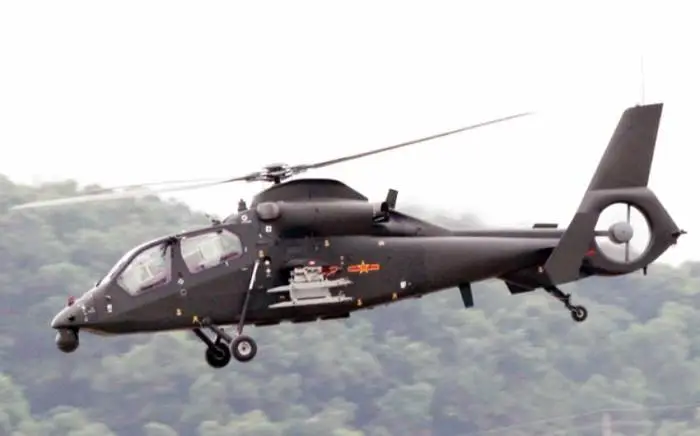
Attack and reconnaissance helicopter Z-19
Since the design of the Z-19 relied heavily on well-developed components and assemblies, testing proceeded very quickly. Despite the fact that the head prototype of the Z-19 was destroyed in September 2010, military tests of the first pre-production batch began in 2011.
What kind of ballistic protection the Z-19 helicopter has is unknown. It can be assumed that the cockpit and the most important parts of the Z-19 can withstand fire from rifle-caliber bullets.
The Z-19 is capable of carrying a wide range of weapons, including laser-guided missiles, rocket launchers and suspended machine-gun-cannon containers. The weight of the combat load on the external components has not been officially announced, but according to expert estimates, it can reach 700-800 kg.
Instead of a movable cannon turret, a ball with optoelectronic sighting and search system sensors and night vision devices, as well as a laser rangefinder-target designator, is located in the bow. To fend off various types of threats, the attack and reconnaissance helicopter is equipped with sensors and defensive systems similar to those used on the Z-10. There are pictures of the Z-19 with the YH MMZ FCR over-the-barrel millimeter-range radar and the HJ-10 ATGM.
The Z-19's flight performance is roughly equivalent to that of the armed Z-9WA. The power plant consists of two WZ-8C turboshaft engines with a power of 940 hp. With. A helicopter with a maximum take-off weight of 4500 kg, with full fuel tanks, is capable of staying in the air for 4 hours. Flight range is about 800 km. Maximum speed – 280 km/h. Cruising - 240 km/h.
Currently, the customer has received more than a hundred Z-19 helicopters. Typically, these light reconnaissance and attack vehicles are supplied to mixed helicopter brigades, which also operate Z-10s.
About 10 years ago, information appeared that the PLA Navy command had initiated a program to adapt the Z-10 and Z-19 combat helicopters for ship-based deployment.
The Chinese media published footage of the Z-10 taking off and landing from the helipad of the Type 072A landing ship.
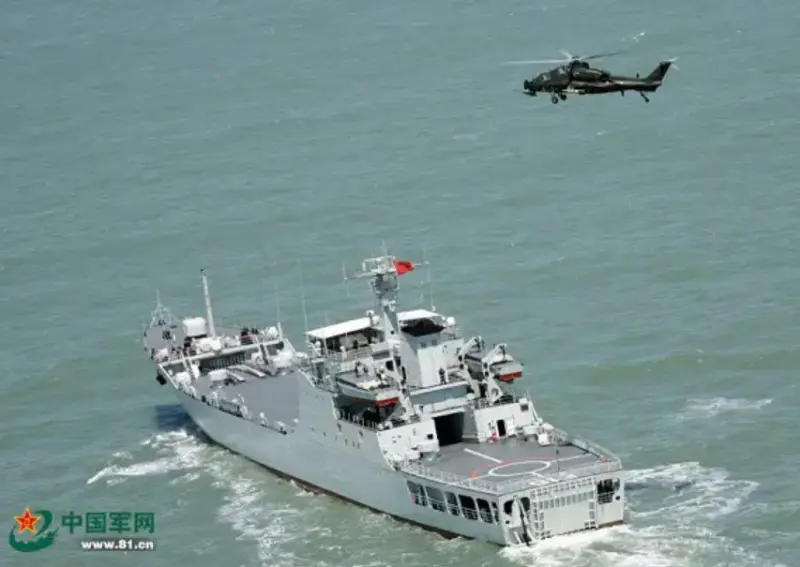
However, the Z-10 helicopter, originally designed for deployment on land airfields, is poorly suited for use in the navy. Taking into account the fact that the Z-9 has long been registered in the PLA Navy, the strike Z-19, which has similar dimensions and weight, has a better chance of becoming a strike rotorcraft designed to support the actions of the Chinese Marine Corps.
To be continued ...
Information